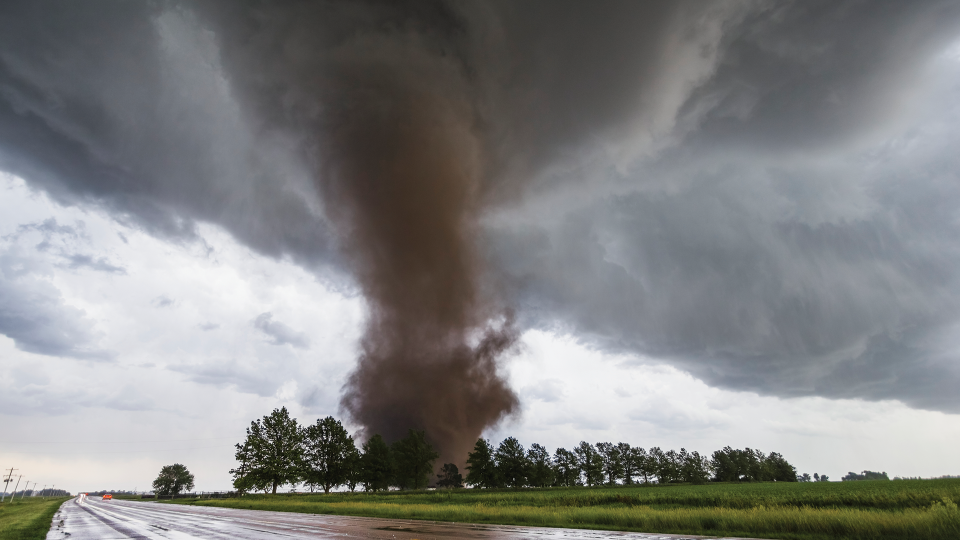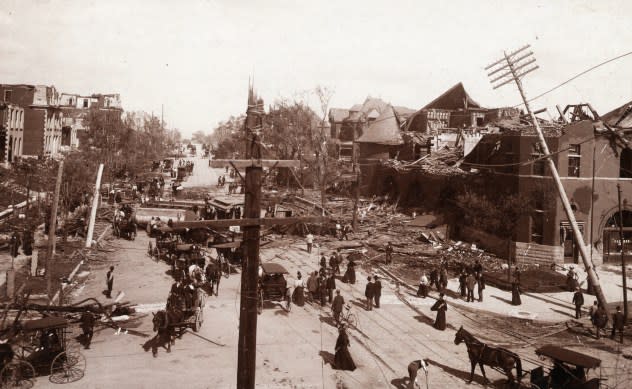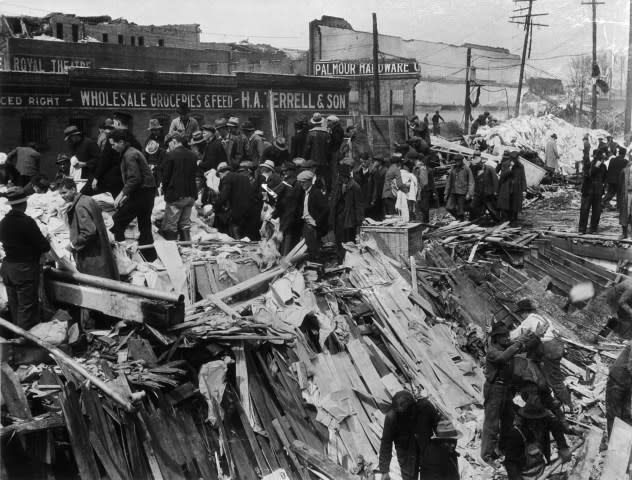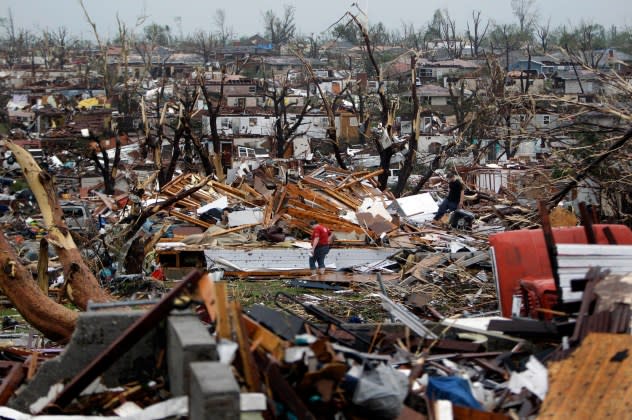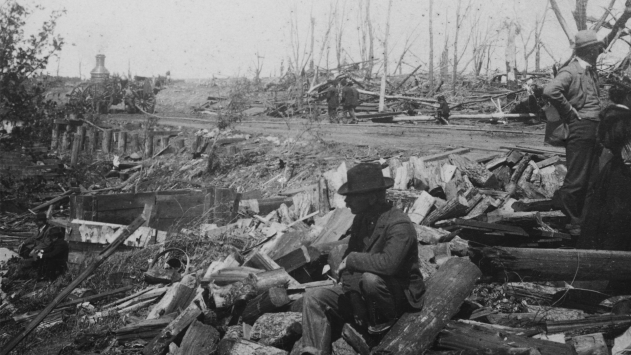Top 10 deadliest tornadoes in US history
Tornadoes are among the most powerful natural disasters and can wreak havoc on communities, organizations and businesses. They have happened in all 50 U.S. states and can strike any time of the year, leaving behind destruction and devastation.
On average, 80 people die each year from tornadoes, according to the National Weather Service.
Here are the top 10 deadliest tornadoes to strike in the United States, according to the Storm Prediction Center.
On March 18, 1925, the deadliest tornado in U.S. history, the Tri-State Tornado of 1925, tore a 219-mile-long path across Missouri, Illinois and Indiana. It was the longest path of a tornado in recorded history, although modern storm investigation practices find that there are typically breaks in a tornado's path.
The F5 tornado was estimated to be about a mile wide and had winds over 300 mph. It traveled at a record speed of 73 mph and destroyed more than 19 communities, including over 15,000 homes.
It claimed the lives of 695 people and injured more than 2,000 others.
On March 18, 1925 - the deadliest and longest tornado in U.S. history tore across three states with a path over 200 miles long and killing 695 people.
Here's a look back at the damage caused by the estimated F5 known as the "Tri-State Tornado." pic.twitter.com/twDLisUtfw— AccuWeather (@accuweather) March 18, 2024
A total of 317 people were killed and more than 100 were injured on May 6, 1840, when the Natchez Tornado struck southwestern Mississippi.
Government officials estimate that the actual death toll may be higher than what has been recorded, as slave deaths were often not counted during this time, the Federal Emergency Management Agency told CNN.
The tornado had a path length of over 150 miles and caused widespread destruction and property damage.
 |
View of tornado destruction in after The Great St. Louis Tornado on May 27, 1896 at the intersection of Lafayette and Jefferson Avenues in St. Louis. The Missou Club House is to the right. (Photo: Getty Images) |
The Great St. Louis Tornado of 1896 is estimated to have killed at least 255 people and injured more than 1,000 on May 27, 1896, as it wreaked havoc across the St. Louis, Missouri, area.
The National Weather Service estimates the tornado would likely be rated as an EF4 on the Enhanced Fujita Scale today, with winds between 168 and 199 mph.
In addition to destroying homes, businesses and steamboats, the tornado also tore away 300 feet of the Eads Bridge, the first bridge to be constructed of true steel, and touted as being "tornado-proof," according to the NWS.
On April 5, 1936, an F5 tornado struck Tupelo, Mississippi, killing 216 people. The tornado was part of a tornado outbreak that spawned more than a dozen tornadoes on April 5 and 6 of that year.
The tornado destroyed the city's water reservoir, causing a loss of clean water coupled with power outages, severe flooding, and raging fires in the days after the storm, according to the Mississippi Encyclopedia.
One notable survivor of the tornado was singer Elvis Presley, who lived just north of Tupelo and was just over a year old at the time.
 |
Workers helped clean up tornado damage in Gainesville, Georgia, on April 6, 1936. (Photo: Getty Images) |
On April 6, 1936, the same system that caused the Tupelo tornado the day before would go on to kill 203 people the next morning in Gainesville, Georgia.
According to Northeast Georgia History Center, two tornadoes converged and destroyed the downtown area.
Two blocks from the downtown square, the tornado collapsed the Cooper Pants Factory, killing over 70 workers, the largest death toll in a single building for any U.S. tornado, according to Tornado Project.
The deadliest tornado in Oklahoma history struck Woodward on April 9, 1947. The F5 tornado started near Canadian, Texas, before moving into Oklahoma.
According to the National Weather Service, the tornado was on the ground for about 100 miles and was up to 1.8 miles wide as it traveled at a speed of about 50 mph. The tornado killed 116 people and was one of the reasons for the Weather Bureau's modernization.
 |
In this May 23, 2011 file photo, Meghan Miller stands in the middle of a destroyed neighborhood as she checks on her sister-in-law's home in Joplin, Missouri. (AP Photo/Jeff Roberson, file) |
The deadliest tornado in modern U.S. history struck Joplin, Missouri, on May 22, 2011. It was the deadliest tornado since SPC records began in 1950. Nearly 1,000 were injured.
The EF5 tornado had a path length of 22 miles and was up to a mile wide at its maximum point. The twister killed around 160 people and injured more than 1,100 others, causing an estimated $2.8 billion in damages.
The tornado completely destroyed more than 6,900 homes, the local hospital as well as several churches, elementary schools, Joplin High School, two fire stations, and several big box stores and local businesses.
On April 24, 1908, an F4 tornado killed an estimated 143 people in portions of Louisana and Mississippi. There were multiple tornadoes across the region that day, resulting in nearly 300 deaths.
 |
People among the debris following a tornado that ripped through New Richmond, Wisconsin in June 1899. (Photo: Archive Photos/Hulton Archive/Getty Images) |
The deadliest tornado in Wisconsin history happened on June 12, 1899, when 117 people were killed when a tornado hit New Richmond, Wisconsin.
Although the storm wasn't massive, the National Weather Service says it happened in the middle of the afternoon on the first day of the Gollmar Brothers Circus, with flying debris causing multiple deaths.
116 people died when an F5 tornado tore through Flint, Michigan, on June 8, 1953. The tornado was about half a mile wide and was on the ground for 27 miles.
Of the 116 fatalities, 113 occurred over a four-block stretch, according to WOOD-TV.

